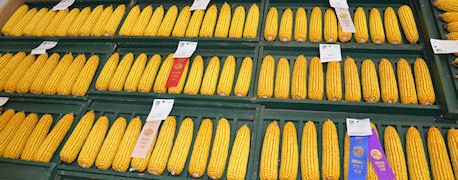
If you know corn breeding inside out, you can move on and read the next local news article in our line-up. If such talk about inbreds, hybrids, open-pollinated corn and the like still causes your eyes to glaze over, read on. Maybe this will help.
A farmer was overheard asking a plant breeder at a recent field day, quietly and after the main talk, what the difference was between an inbred and a hybrid. It's hard to play your best in any game if you don't understand the rules. Do you really understand every rule in soccer? Would you enjoy the game more if you did?
Related: The Case of the Strange-Looking Ear in the Corn Field
Dave Nanda, consultant for Seed Consultants, Inc., and a former active plant breeder, says open-pollinated corn was the variety farmers grew throughout early Pioneer days, until the early-to-mid 1930s. Reid's Yellow Dent is only grown in nurseries to preserve the germplasm today, but it was once what grew on most farms. It's open-pollinated, meaning the plant can pollinate another plant with its pollen, or it can pollinate itself.
Corn shows where you exhibit 10 ears of corn likely grew out of that era. To select seed for next year, you went to the corn crib and selected the best ears you could find. Or else someone did it for you and sold you the seed. The resulting plants would be similar to their parents, because there was only one parent line involved.
Related: Companies Maintain Weird Germplasm For A Reason
Yields wouldn't be great, more like 20 to 80 bushels per acre instead of 150 to 250 bushels per acre, because hybrid vigor was as of yet unknown. Hybrid vigor, talked about more in crossbreeding animals, means two pure line parents crossed with each other produce offspring that do better than either parent by themselves. The cross puts a kick into yield and other traits.
The caveat, of course, is that you can't take corn from the bin any longer and grow it as seed. Plant hybrid corn as seed and various types of plants emerge, because it's no longer just one line.
Continue reading: Corn Breeding 102
About the Author(s)
You May Also Like




